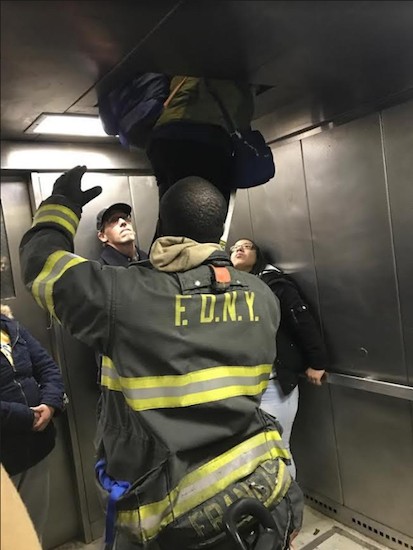Stringer: MTA botches elevator and escalator inspections, leading to breakdowns
NYC Transit challenges comptroller’s report

FDNY officials removed 20 trapped passengers from the Court Street R train station elevator in January. This was the second time since last summer that the elevator stalled with straphangers inside. Photo by Rachel Jo Silver
Subway-riding New Yorkers take it for granted that sometimes they will be required to trudge up broken MTA escalators or take the stairs when they find the station’s elevator broken.
An audit released by New York City Comptroller Scott Stringer on Monday could explain why there are so many breakdowns.
The Comptroller’s Office says the study found MTA did not perform all of its scheduled preventive maintenance on almost 80 percent of sampled escalators and elevators. One third of the preventive maintenance assignments that were scheduled were completed late, if at all. And in many cases, work orders were never created, even after new defects were found during maintenance work or inspections.
